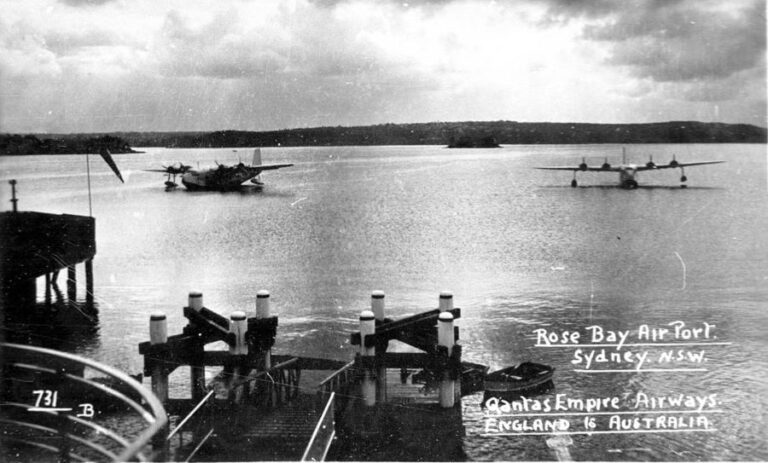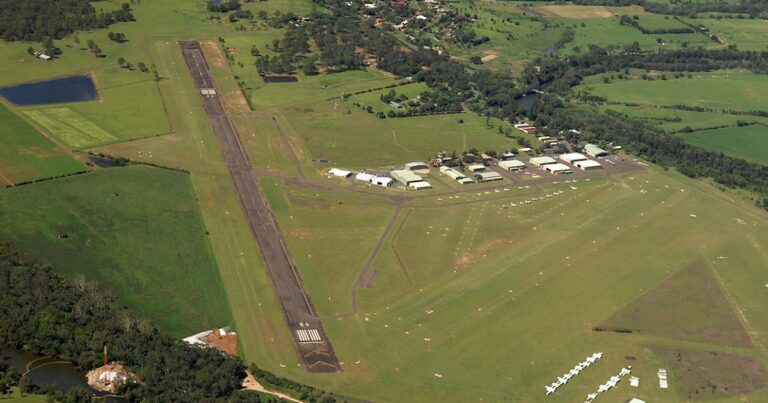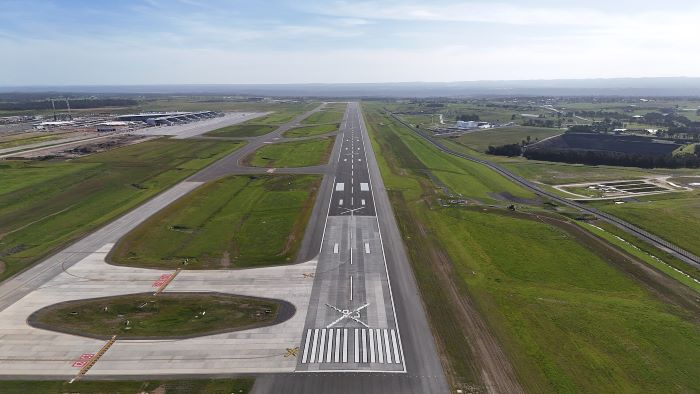Lost among the Sydney Region’s sprawling suburbs and farms lie more than two dozen old military airfields. Most of these were built during the Second World War to defend the city from invasion or air raids. In all, the Sydney Region boasted 27 military airbases and satellite airstrips in 1945. Most were relinquished after the war and of many, no traces remain.
In 1942, with Japanese invasion of northern Australia or carrier strikes against the east coast a real threat, clusters of satellite runways were established to support each of the main RAAF bases at Mascot, Bankstown, Camden and Richmond.
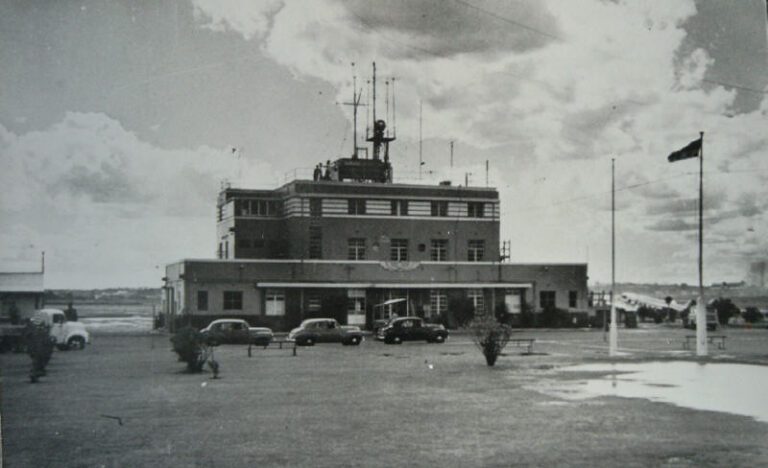
These satellite fields allowed aircraft to land at smaller strips nearby when weather or congestion affected the main base, or as an alternative if their field was attacked while they were flying a mission. The standard construction for such a strip was a bitumen runway 1.5km long with grassed taxi-ways, and a dozen camouflaged “hideouts” to conceal planes.
Early in the war, the RAAF had few enough aircraft to fill the main bases, let alone satellites, but in 1945, it was the fourth largest air force in the world, fielding over 170,000 men and women and nearly 6000 planes, requiring lots of runway space. Many US and British aircraft were also based around Sydney prior to heading north to the battlefields.
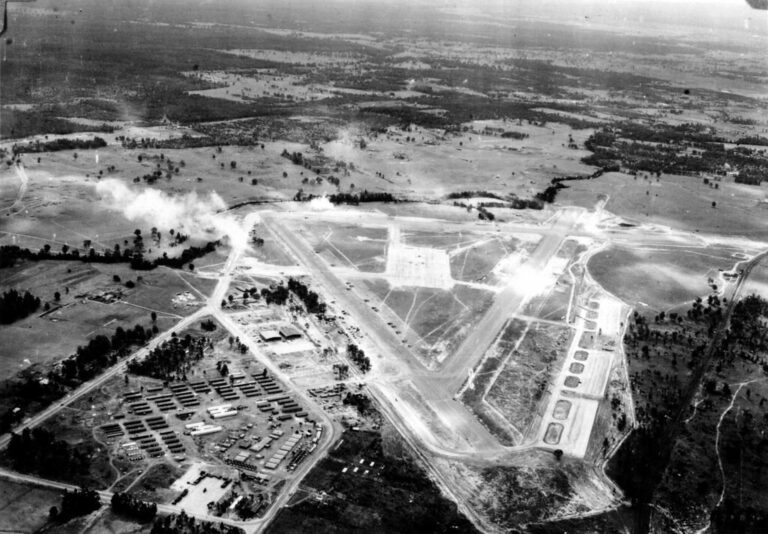
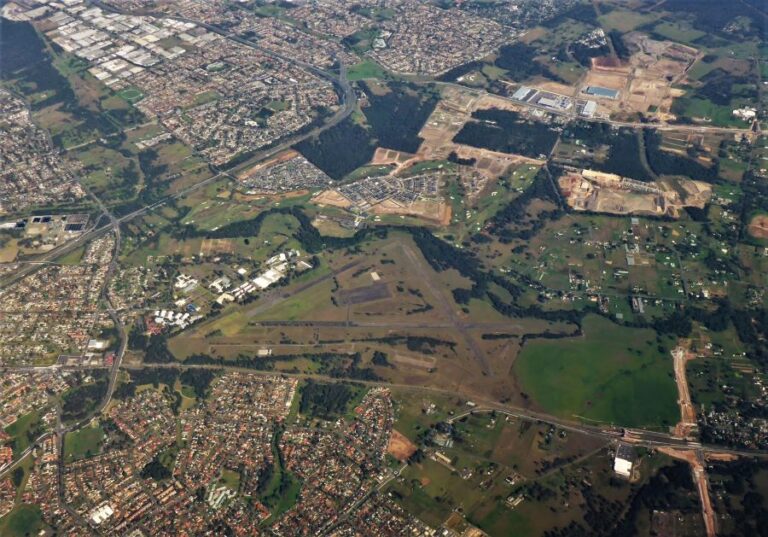
US squadrons used a large complex of three runways at Fleur, near Penrith as a base from 1942. Hundreds of aircraft and thousands of personnel were based here for several years. Satellite fields for Fleur were established at Wallgrove, Bringelly, Mittagong, Bargo and at Tuggerah, on the Central Coast. Of these, Tuggerah’s runway has long been swallowed by urban development, and Bargo’s by farmland, while Mittagong maintains an aviation link by hosting the quaint Mittagong Aero Club. Smidgens of Wallgrove’s runway are still visible behind a factory, but not far to the southwest is former airfield, Bringelly, whose old landing ground has been re-purposed as Western Sydney International (main photo); the city’s second international airport, due to open in 2026. Fleur’s deserted tarmac for decades hosted the Sydney University Radio Observatory, but when that closed in the late nineties, developers moved in, and no trace at all is left of this huge wartime base.

Other airfields escaping redevelopment but lying under farmland are Moss Vale, nearby Calwalla and Pitt Town, near Windsor. You can still drive down Airstrip Road at Pitt Town, along the upgraded surface of the old runway from where Spitfires used to roar into the sky, hobby farms passing by on each side.
Some of the old airfields lost the battle with the suburbs. Mt Druitt strip, after the war a huge bomb dump and briefly a 24-hour motor racing circuit, has been built over by house plots, though little RAAF Memorial Park, set among the sprawling suburb, provides a reminder that it was once on Sydney’s frontline. The picturesque Hoxton Park civil Aerodrome, built as a RAAF field in 1942, closed in 2008 and its grounds were turned over to warehouses.
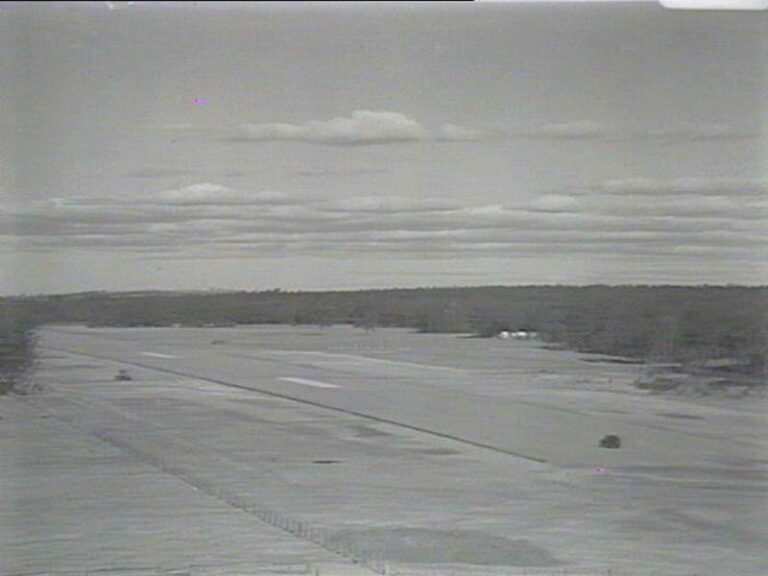
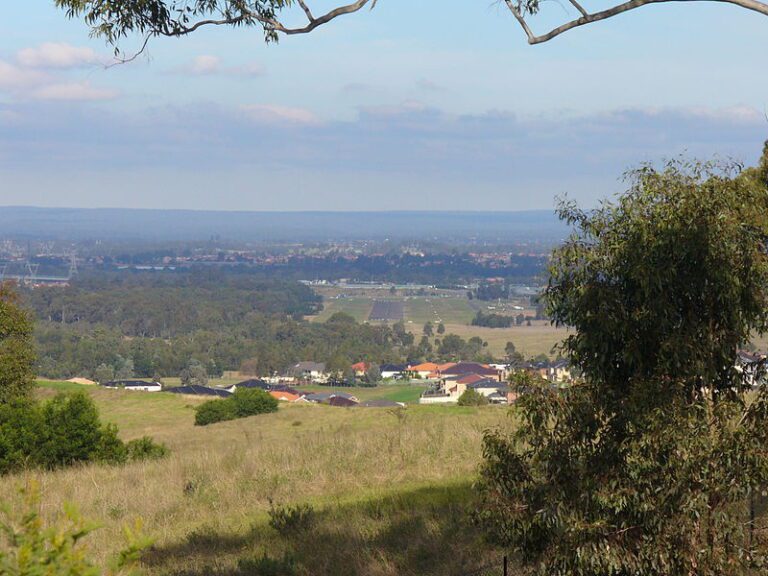
On the Central Coast, Woy Woy Airfield lying under Trafalgar Avenue and Wamberal Airfield have vanished almost without trace, although one Woy Woy resident dug up a complete V12 Spitfire engine in his back yard not long ago. Two more fields succumbed to redevelopment only recently. The large Schofields complex just off the M7 near Blacktown hosted 25 Royal Navy squadrons during the war and was the rehearsal site for the Sydney Olympics Opening ceremony. It now holds a dystopian and treeless housing estate, though a few parts of the old runways were left for residents to ponder. Nearby Marsden Park Airfield was less lucky. Once used as a motor racing track briefly during the 1950’s, there are no remaining traces.
Also famous as a race track during the seventies and eighties, Castlereagh Drag Strip, near Penrith is another satellite lost to the hungry city, now holding 54 rural blocks. Cordeaux and Nepean Dam airfields were basic out-stations for larger fields and still vaguely exist in the rough country of the water catchment areas south of Sydney. But not all the wartime strips lost the battle with the metropolis. Some still fly!

Bankstown, Richmond and Camden, all hosting Spitfire squadrons before they were sent north to battle Zero’s over Darwin, continue with aviation uses. Bankstown three short runways now host a mix of flight schools, air-medical, helicopter, charter and emergency services activities that work from strips where US Airacobra planes used to fly. Camden was a base for WW2 Hudsons on anti-submarine patrols, and later hosted RAAF Kitthawks headed for New Guinea, and like Bankstown is privately owned by the Airia Group. Now there is one sealed and one grassed runway plus two glider strips, and activities include private flying, ballooning, parachuting and gliding.

Richmond, operational since 1925, remains Sydney’s only RAAF base; head of the air force’s Air Lift Group. They have been flying Hercules transports (of various models) there for 67 years! During the war, Beauforts, Ansons, Spitfires, Boomerangs and Wirraways graced its two-kilometre-long runway. In fact, it was a Wirraway from Richmond that took off in an unsuccessful search for a Japanese submarine-launched floatplane that reconnoitred Sydney Harbour in May 1942. It was the closest Sydney ever came to an air raid.
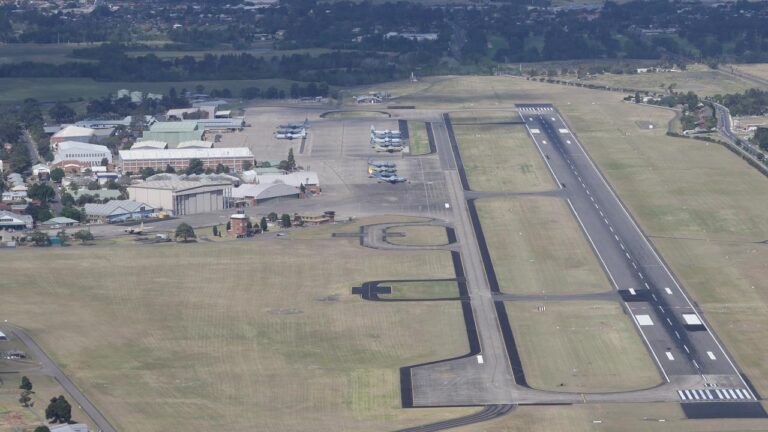
Light aircraft also still fly from grassy taxi-ways at The Oaks, west of Camden. And former RAN airbase Albion Park is now Illawarra’s commercial airport and holds an impressive Aviation Museum, and was also where Clive Caldwell–Australia’s greatest ace– learned to fly.
Also to the south of the city is the short Holsworthy Army Base airfield, originally from 1942, but rebuilt in 1975, and still used by army aviation units.
Menangle Park, next to the Hume Highway, briefly a racecourse before being used by the Light Horse as a training camp in the First World War was again taken over by the Army in the Second, this time the RAAF also building a runway over part of the track. After the war it reverted back to horse racing and is now Australia’s premier harness racing circuit.
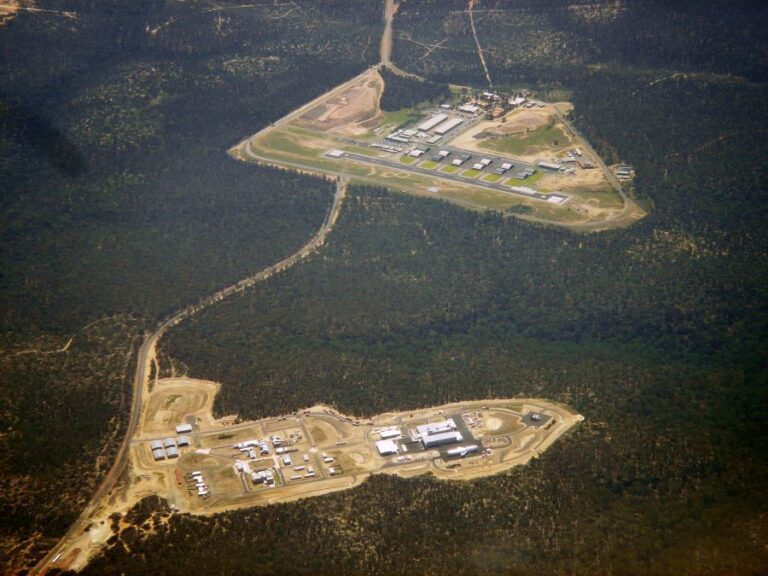
And of course, there is Kingsford Smith at Mascot, taken over by the RAAF during the war, with US fighters based there in 1942 to defend Sydney. Now Australia’s largest and busiest airport, it handled over 40 million passengers last year and is at the opposite end of the aviation spectrum to Mittagong’s little old war runway, where you can land your Cessna for just fifteen bucks.
Mascot was also the destination of the largest aircraft yet to fly under the Sydney Harbour Bridge, when Flt. Lt. Peter Isaacson, fundraising for the war effort eased a four engine Lancaster through the gap between harbour and coathanger in 1943 on a flight from Richmond.
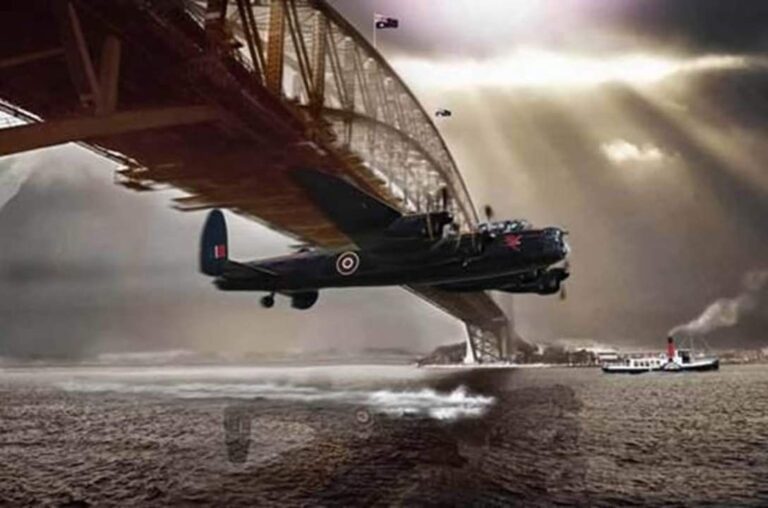
Mascot is not however Sydney’s oldest international airport; that distinction goes to Rose Bay Flying Boat Base where Australia’s first scheduled overseas flights took off from the Harbour’s waters in 1938, taking 10 days to get to London via 30 exotic stops and costing a year’s average wage for the fare. RAAF and Qantas flying boats used Rose Bay during the war, and it continued to operate until 1974, the world’s last major flying boat base.
Sadly, as with so many of Sydney’s other forgotten wartime airfields, today there is no trace of the old base at Rose Bay, swallowed by a hungry city oblivious to the contribution made to protect her when danger was closest.
